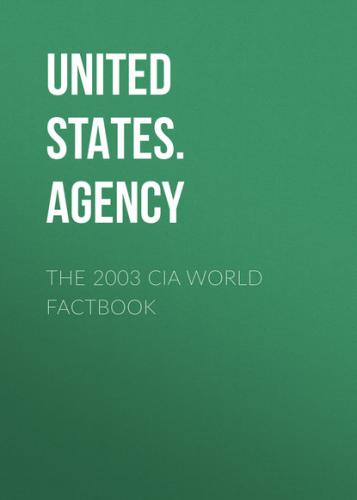hope for deposits in the immediate Faroese area, which may
eventually lay the basis for a more diversified economy and thus
lessen dependence on Danish economic assistance. Aided by a
substantial annual subsidy (15% of GDP) from Denmark, the Faroese
have a standard of living not far below the Danes and other
Scandinavians.
GDP:
purchasing power parity - $1 billion (2001 est.)
GDP - real growth rate:
10% (2001 est.)
GDP - per capita:
purchasing power parity - $22,000 (2001 est.)
GDP - composition by sector: agriculture: 27% industry: 11% services: 62% (1999)
Population below poverty line:
NA%
Household income or consumption by percentage share:
lowest 10%: NA%
highest 10%: NA%
Inflation rate (consumer prices):
5.1% (1999)
Labor force:
24,250 (October 2000)
Labor force - by occupation: fishing, fish processing, and manufacturing 33%, construction and private services 33%, public services 34%
Unemployment rate:
1% (October 2000)
Budget:
revenues: $488 million
expenditures: $484 million, including capital expenditures of $21
million (1999)
Industries:
fishing, fish processing, shipbuilding, construction, handicrafts
Industrial production growth rate:
8% (1999 est.)
Electricity - production:
160.4 million kWh (2001)
Electricity - production by source: fossil fuel: 62.4% hydro: 37.6% other: 0% (2001) nuclear: 0%
Electricity - consumption:
149.1 million kWh (2001)
Electricity - exports:
0 kWh (2001)
Electricity - imports:
0 kWh (2001)
Oil - production:
0 bbl/day (2001 est.)
Oil - consumption:
4,500 bbl/day (2001 est.)
Oil - exports:
NA (2001)
Oil - imports:
NA (2001)
Agriculture - products:
milk, potatoes, vegetables; sheep; salmon, other fish
Exports:
$418 million f.o.b. (2001)
Exports - commodities:
fish and fish products 94%, stamps, ships (1999)
Exports - partners:
Denmark 39.9%, UK 32.1%, Norway 7.4%, Netherlands 6.1% (2002)
Imports:
$469 million c.i.f. (1999)
Imports - commodities:
machinery and transport equipment 29%, consumer goods 36%, raw
materials and semi-manufactures 32%, fuels, fish and salt (1999)
Imports - partners:
Denmark 53.8%, Norway 24.2%, Iceland 5.7% (2002)
Debt - external:
$64 million (1999)
Economic aid - recipient:
$55 million (annual subsidy from Denmark)
Currency:
Danish krone (DKK)
Currency code:
DKK
Exchange rates:
Danish kroner per US dollar - 7.89 (2002), 8.32 (2001), 8.08
(2000), 6.98 (1999), 6.7 (1998)
Fiscal year:
calendar year
Communications Faroe Islands
Telephones - main lines in use:
24,851 (1999)
Telephones - mobile cellular:
10,761 (1999)
Telephone system:
general assessment: good international communications; good
domestic facilities
domestic: digitalization was completed in 1998; both NMT (analog)
and GSM (digital) mobile telephone systems are installed
international: satellite earth stations - 1 Orion; 1 fiber-optic
submarine cable to the Shetland Islands, linking the Faroe Islands
with Denmark and Iceland; fiber-optic submarine cable connection to
Canada-Europe cable
Radio broadcast stations:
AM 1, FM 13, shortwave 0 (1998)
Radios:
26,000 (1997)
Television broadcast stations:
3 (plus 43 low-power repeaters) (September 1995)
Televisions:
15,000 (1997)
Internet country code:
.fo
Internet Service Providers (ISPs):
2 (2000)
Internet users:
3,000 (2000)
Transportation Faroe Islands
Railways: 0 km
Highways: total: 463 km paved: 454 km unpaved: 9 km (1999)
Waterways:
none
Ports and harbors:
Torshavn, Klaksvik, Tvoroyri, Runavik, Fuglafjordhur
Merchant marine:
total: 7 ships (1,000 GRT or over) 100,951 GRT/139,396 DWT
note: includes some foreign-owned ships registered here as a flag of
convenience: Denmark 3, Norway 1, United Kingdom 1 (2002 est.)
ships by type: cargo 2, petroleum tanker 2, refrigerated cargo 1,
roll on/roll off 1, short-sea passenger 1
Airports:
1 (2002)
Airports - with paved runways: total: 1 914 to 1,523 m: 1 (2002)
Military Faroe Islands
Military branches:
no regular indigenous military forces; small Police Force and Coast
Guard are maintained
Military expenditures - dollar figure:
$NA
Military expenditures - percent of GDP:
NA%
Military - note:
